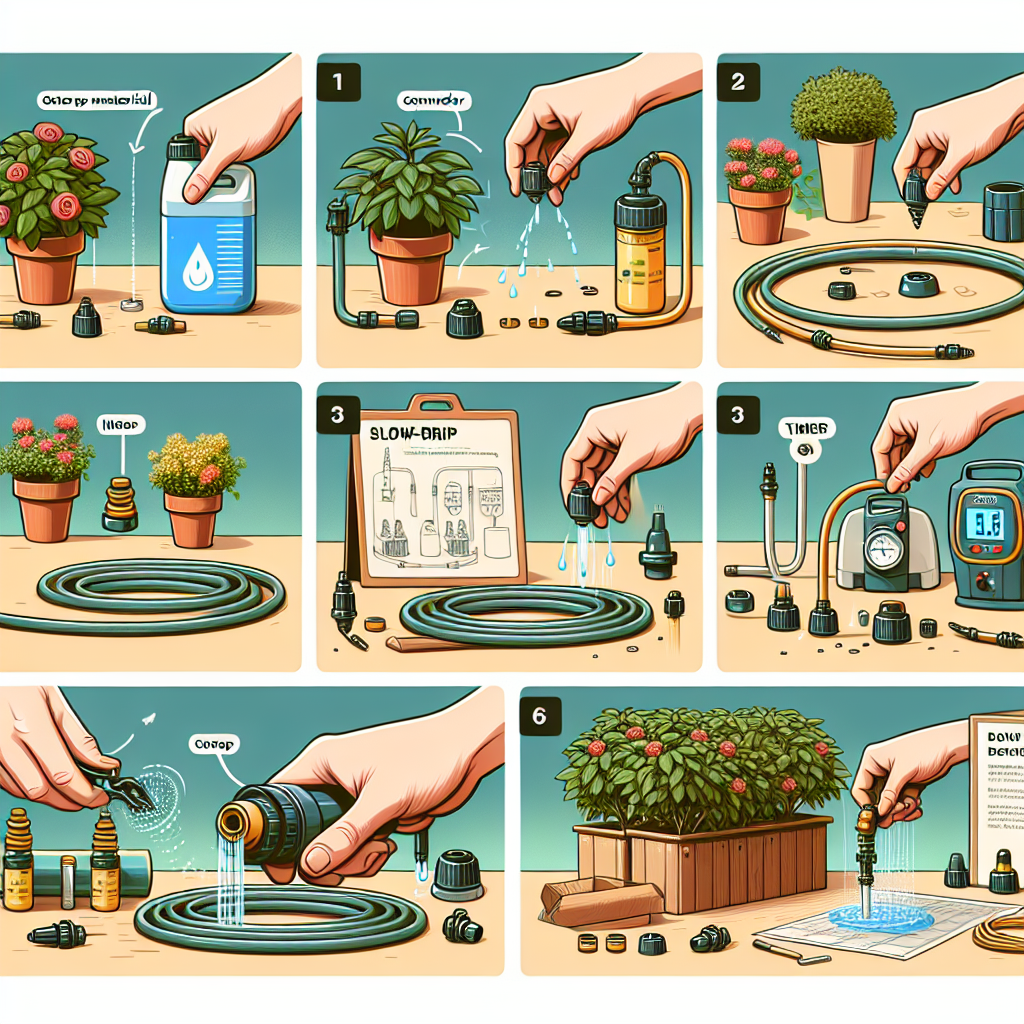Are you tired of spending hours hand-watering your plants every day? Do you want a more efficient way to ensure your garden stays hydrated without the hassle of constant maintenance? Look no further than a slow-drip watering system! This innovative solution delivers water directly to the roots of your plants, ensuring they get the hydration they need to thrive while saving you time and effort. In this article, we will explore the best practices for setting up and maintaining a slow-drip watering system so you can enjoy a beautiful and healthy garden with minimal effort.
**Benefits of a Slow-Drip Watering System**
Before delving into how to set up and maintain a slow-drip watering system, it’s important to understand the benefits it offers for your garden. Unlike traditional watering methods that can result in over or under-watering, a slow-drip system delivers water slowly and directly to the roots of your plants. This not only ensures that each plant receives the right amount of water it needs but also helps prevent water waste through runoff or evaporation.
In addition to promoting healthier plant growth, a slow-drip watering system can also save you time and money in the long run. By automating the watering process, you can spend less time manually watering your garden and more time enjoying its beauty. Additionally, by delivering water directly to the roots where it is needed most, you can reduce water usage and lower your utility bills. With these benefits in mind, let’s dive into the best practices for setting up and maintaining a slow-drip watering system.
**Choosing the Right Equipment**
The first step in setting up a slow-drip watering system is choosing the right equipment for your garden. There are several components you will need, including tubing, emitters, connectors, filters, and timers. When selecting these items, it’s important to consider factors such as the size of your garden, the type of plants you have, and your budget.
Tubing is used to deliver water from your water source to your plants. It comes in various lengths and diameters, so be sure to choose tubing that is appropriate for the size of your garden. Emitters are devices that release water slowly into the soil near the plant’s roots. Different types of emitters are available depending on your specific plant needs.
Connectors are used to join tubing together or connect it to other components such as filters or timers. Filters help prevent clogging by removing debris from your water source before it reaches your plants. Timers allow you to automate when and how long your slow-drip system runs, ensuring consistent watering without manual intervention.
**Setting Up Your Slow-Drip System**
Once you have gathered all the necessary equipment, it’s time to set up your slow-drip watering system. Start by connecting one end of the tubing to your water source using a connector. Lay out the tubing along the base of each row of plants in your garden, securing it in place with stakes or clips as needed.
Next, install emitters near each plant’s root zone according to their individual water requirements. Be sure to follow any manufacturer instructions for spacing and placement. If using filters, install them between the tubing and emitters to prevent clogs.
Finally, set up your timer according to your desired watering schedule. Most timers allow you to program specific days of the week and times for watering based on factors such as plant type and weather conditions.
**Maintaining Your Slow-Drip System**
Proper maintenance is key to ensuring that your slow-drip watering system continues to work effectively over time. Regularly inspect all components for leaks or damage and replace any worn-out parts as needed. Clean filters periodically to prevent clogs from forming and check emitters for proper function.
Adjustments may be necessary as plants grow or seasons change; consider adding more emitters or adjusting their placement if certain areas are not receiving enough water. Additionally, monitor soil moisture levels regularly using a moisture meter or by simply checking soil moisture by hand.
During colder months when freezing temperatures are possible, be sure to drain all water from tubing and store equipment indoors until springtime returns when temperatures warm up again
**FAQs:**
1) Can I use a slow-drip watering system for all types of plants?
– While most plants benefit from a slow-drip system, some may require different watering methods depending on their specific needs.
2) How often should I water my plants with a slow-drip system?
– The frequency of watering will depend on factors such as plant type soil conditions weather patterns.
3) Is it possible my plants could still be over-watered with this method?
– It’s unlikely but possible if too many emitters are used in close proximity causing excessive moisture within root zones.
4) How do I know if my emitters need replacing?
– If they are clogged damaged leaking replace them promptly maintain optimal performance.
5) Can I use rainwater collected from barrels with this setup?
– Rainwater is ideal low-cost option eco-friendly way provide natural hydration gardens.
By following these best practices for setting up and maintaining a slow-drip watering system effectively schedule avoid common pitfalls ensure healthy thriving garden minimal effort required part just sit back watch grow!













